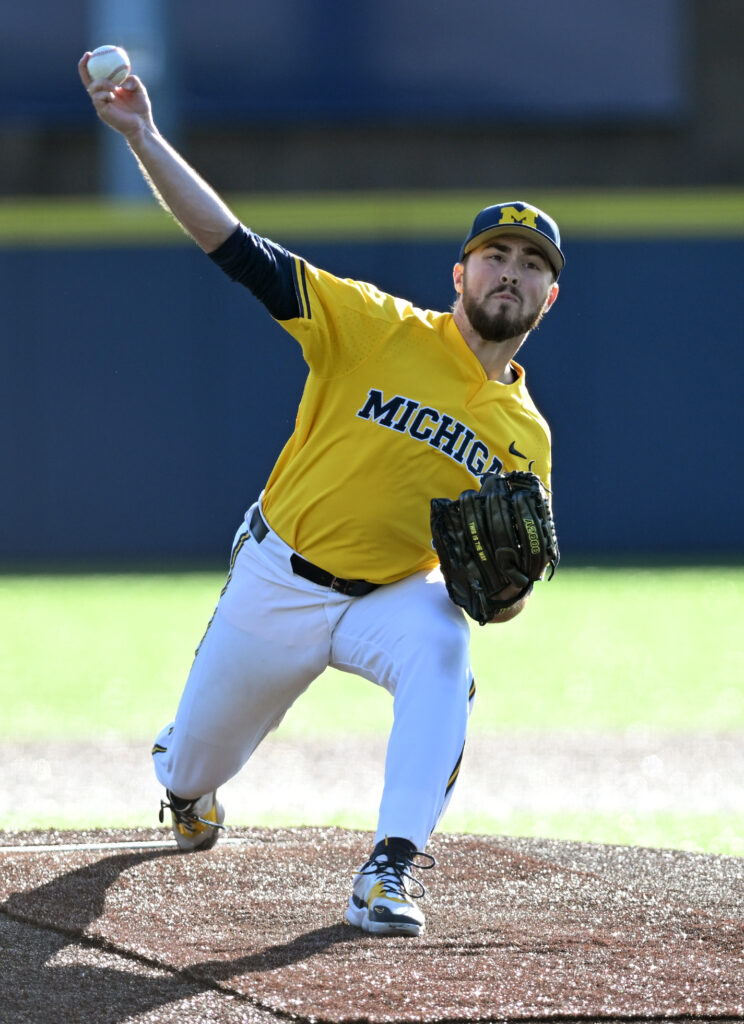By Eamon Horwedel, Baseball
Every transfer student athlete transfers for various reasons. Some transfer to find a school that’s closer to home while others do it to seek opportunities that better suit their athletic and/or academic needs. In 2022, the NCAA adopted a rule change stating “athletes who transfer schools for the first time would no longer have to redshirt for a year before competing.” This rule change, along with the increasingly popular transfer portal, have made transferring easier than ever before. New opportunities and fresh starts can be really great for college athletes, but it doesn’t make transitioning from one school to the next any less difficult. With so many athletes now hitting the transfer portal, I believe it’s important to recognize some of the effects transferring can have on an athlete.
Every athlete has their own unique story as to why they transferred. For me, I wanted a second college experience. I played my first four years of college baseball at Ohio University before deciding to enter the transfer portal after graduating in 2022. With two years of eligibility left, I decided to graduate transfer with the hopes of finding a new college experience that was closer to home. I was fortunate enough to have the opportunity to play the remainder of my college baseball days at the University of Michigan.
Not all transfers share the same experiences. Someone who transfers after just one year of college might have a completely different post-transfer experience than someone like me, who transferred after a full four years of college. For instance, some of the transitions I had to make were easier than others. Having already been to college for four years, I knew a lot of what to expect. However, since I was living off campus and was older than a lot of the other athletes, I often felt like an outsider and distant from the rest of the athletic community.
It was strange starting all over again as a 22 year old. I remember on my first day on campus, I attended the incoming athlete orientation where I was surrounded by hundreds of freshmen athletes. I felt out of place. There I was, a recent college graduate, hanging out with a bunch of recent high school graduates. It was difficult to bond with people right away. In my undergrad, I had built relationships with athletes from all the other teams, creating a small community, but that was all gone now. I was going to have to start from scratch, and not just with forming friendships with other athletes, but I’m talking about everything. Learning about school traditions, navigating the campus, finding out who and what my available resources were. It was all new. Not only did I have to adjust to a new school environment, but I had to adjust to playing under a new set of coaches alongside a new crop of teammates. It wasn’t so easy at first. It took some time before I was able to find my groove balancing a new class schedule with baseball, learning about my new teammates, and understanding a sense of the team culture and policies. On top of adjusting to everything, I still had to find ways to compete and be an expert at my sport. As a new face on the team, I still had to prove that I belonged and fight for my spot, something most 22 year old college students don’t have to do.
It was mentally taxing going through the fall having to compete at an elite level while adjusting to a new setting. I made the big decision to transfer to Michigan back in the summer, and I carried the weight of that decision with me throughout the year, hoping I made the right choice and wouldn’t regret anything. I’m sure many other transfer athletes feel this way too. In efforts to cope with these thoughts and feelings, I tried my best to immerse myself as much as I could with the school. I found I grew closest with my teammates who were also fellow transfers due to our shared commonality and unique experience that other teammates hadn’t had. In fact, my status as a transfer is also what led me to form friendships with other transfer athletes outside of the baseball team. I was able to bond really easily with them and we were able to learn about each other’s prior college experiences. I was able to learn about a whole new team culture and have pride in a school I never thought I would attend. Along with the many different athletes I got to meet, I was also introduced to the many different athletic department members that made my transition into Michigan a lot easier. These included our nutrition team, academic counselors, athletic counseling team, and strength coaches.
The journey of a transfer student-athlete is a unique and challenging one. Whether it’s a desire for a second college experience, a change in athletic or academic opportunities, or simply a quest for a fresh start, the decision to transfer comes with its share of difficulties and adjustments. While the NCAA rule changes and the transfer portal have made the process more accessible, the emotional and logistical hurdles should not be underestimated. Nevertheless, as demonstrated by this personal account, with resilience, determination, and the support of fellow transfer athletes and dedicated university staff, the transition can ultimately lead to new friendships, personal growth, and a sense of belonging in a new school and athletic community.
About the Author
Eamon Horwedel recently graduated from University of Michigan’s School of Social Work in the Management and Leadership pathway and interned with University of Michigan Athletics. Eamon transferred from Ohio University to play baseball for University of Michigan 2023-2024.



